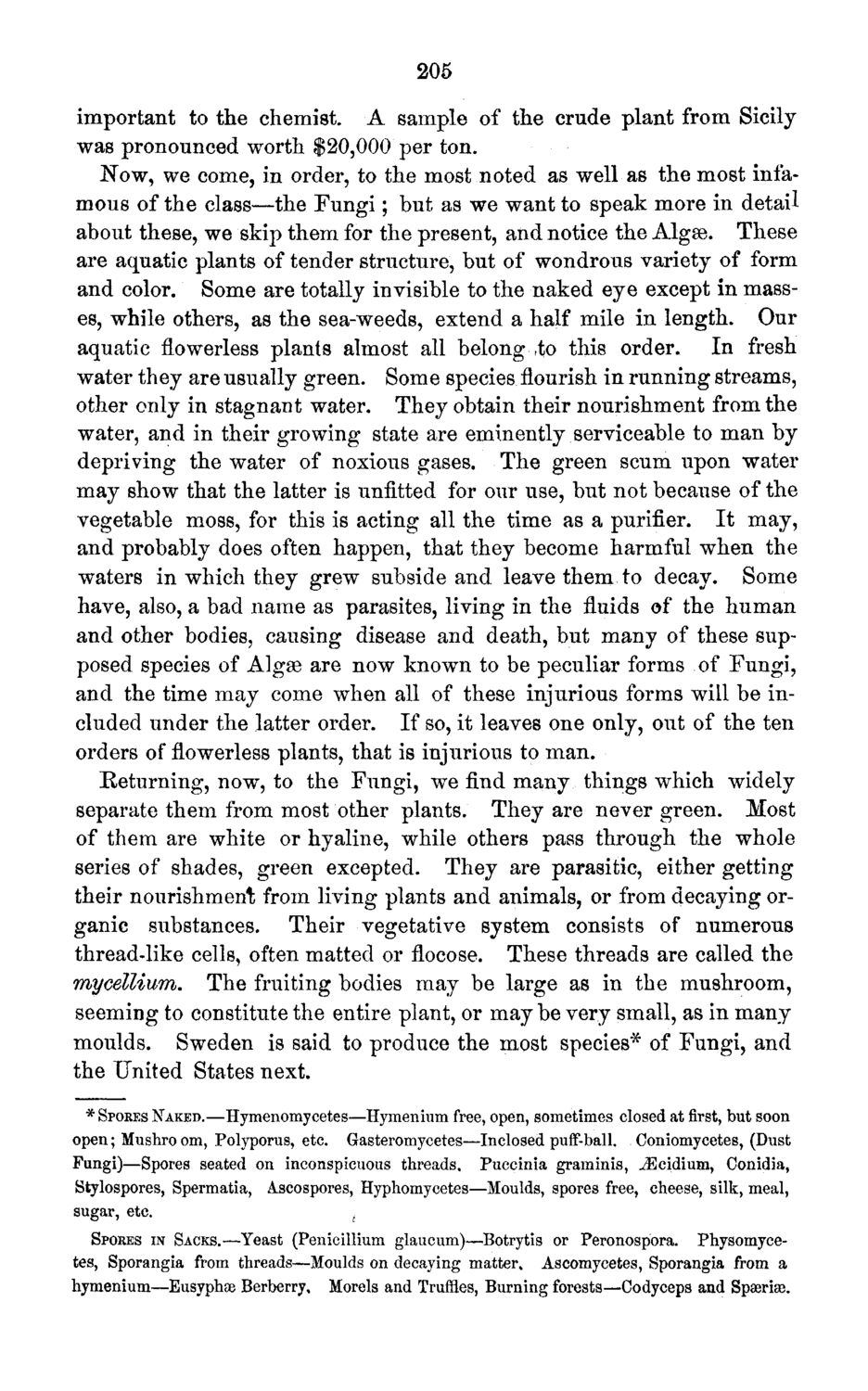| |
| |
Caption: Board of Trustees Minutes - 1871
This is a reduced-resolution page image for fast online browsing.

EXTRACTED TEXT FROM PAGE:
205 important to the chemist. A sample of the crude plant from Sicily was pronounced worth $20,000 per ton. Now, we come, in order, to the most noted as well as the most infamous of the class—the F u n g i ; but as we want to speak more in detail about these, we skip them for the present, and notice the Algse. These are aquatic plants of tender structure, but of wondrous variety of form and color. Some are totally invisible to the naked eye except in masses, while others, as the sea-weeds, extend a half mile in length. Our aquatic flowerless plants almost all belong-,to this order. In fresh water they are usually green. Some species flourish in running streams, other only in stagnant water. They obtain their nourishment from the water, and in their growing state are eminently serviceable to man by depriving the water of noxious gases. The green scum upon water may show that the latter is unfitted for our use, but not because of the vegetable moss, for this is acting all the time as a purifier. It may, and probably does often happen, that they become harmful when the waters in which they grew subside and leave them to decay. Some have, also, a bad name as parasites, living in the fluids of the human and other bodies, causing disease and death, but many of these supposed species of Algae are now known to be peculiar forms of Fungi, and the time may come when all of these injurious forms will be included under the latter order. If so, it leaves one only, out of the ten orders of flowerless plants, that is injurious to man. Returning, now, to the Fungi, we find many things which widely separate them from most other plants. They are never green. Most of them are white or hyaline, while others pass through the whole series of shades, green excepted. They are parasitic, either getting their nourishment from living plants and animals, or from decaying organic substances. Their vegetative system consists of numerous thread-like cells, often matted or flocose. These threads are called the mycellium. The fruiting bodies may be large as in the mushroom, seeming to constitute the entire plant, or may be very small, as in many moulds. Sweden is said to produce the most species'* of Fungi, and the United States next. * SPORES NAKED.—Hymenomycetes—Hymenium free, open, sometimes closed at first, but soon open; Mushro om, Polyporus, etc. Gasteromycetes—Inclosed puff-ball. Coniomyeetes, (Dust Fungi)—Spores seated on inconspicuous threads, Puccinia graminis, JEcidium, Conidia, Stylospores, Spermatia, Ascospores, Hyphomycetes—Moulds, spores free, cheese, silk, meal, sugar, etc. SPORES IN SACKS.—Yeast (Penicillium glaucum)—Botrytis or Peronospora. Physomycetes, Sporangia from threads—Moulds on decaying matter, Ascomycetes, Sporangia from a hymenium—Eusyphse Berberry, Morels and Truffles, Burning forests—Codyceps and Spaerise.
| |